This summer, we’ll explore seasonal summer fashions from the 20’s possibly through the 70’s! We begin with summer day dresses. Accessories will be looked at in another series, so we’ll leave them aside here, besides summer shoes.
This is a long post, so you may wish to open it on the web to be sure that you receive the entire post. Thank you!
The 1920’s had a strange contrast of boyishness, rebellion, and femininity. Despite relishing freedom from previous fashions and social norms, women still embraced feminine fabrics, colors, and, in eveningwear, beading, jewelry, and flowing skirts for dances.
In the summertime, that usual sense of fun imbued day dresses with bright colors, while maximizing breath ability in fabric.
Day dresses were, of course, made in a more informal fabric than an afternoon dress might be, if intended for parties or weddings.
1920’s Fabrics and Palette
Most dresses used various types of cotton fabrics, as other popular fabrics would have been too expensive or too warm. Types included cotton crepe, voile, dress ratine, chambray, gingham, percale, piqué, and seersucker. Gingham was one of the less frequent ones, as prints were less often worn outside the home, but was still beloved.1
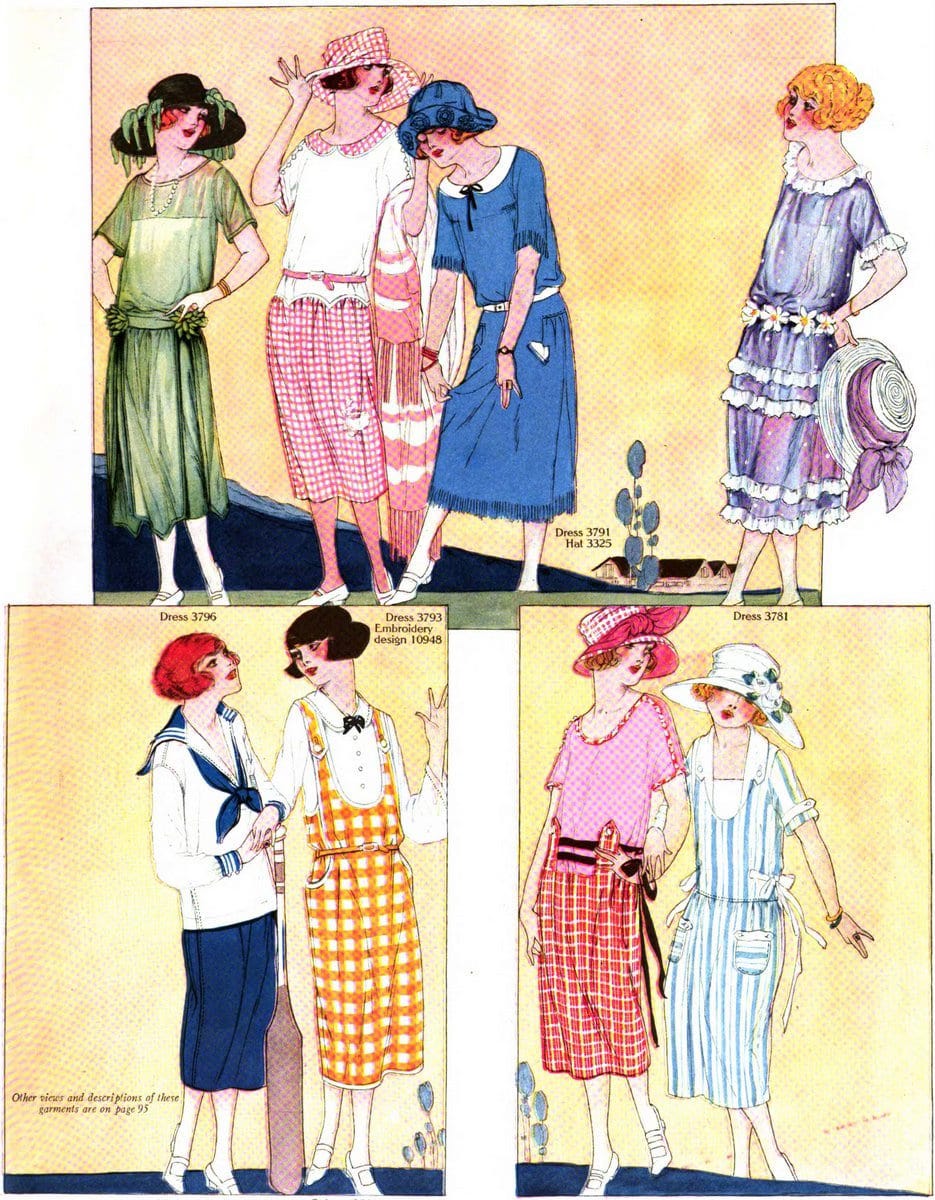
Solid colors were preferred over prints for most of the ’20s. A solid color showed off beads, embroidery, and ribbon decorations better than patterns. Early colors were mostly dark blue, tan, deep pink, burgundy, emerald green, and violet. . . Colors were overall of a muted or pastel palette. Colored included jade green, dusty peach, deep pink (called Rose), navy blue, medium blue, faded yellow, light grey, sand, burnt orange, buff, and violet (purple). Black was another fashionable color that was no longer strictly worn for mourning.2
In the images we came across, blue, red, and pink seemed to be the most prevalent summer shades, followed by oranges, purples, and lastly, green. Unfortunately, there don’t seem to be many extant color palettes from the 1920’s, particularly from the summer.
1920’s Day Dresses
These were intended to be suitable for out-of-the-house on a day to day basis:
Running errands, working in an office or department store, or visiting friends in the afternoons put women into a solid color dress with a matching light jacket or a wool two-piece traveling suit. For church, women dressed in the best outfit she owned, complete with coordinated gloves, hat, and bag.
Necklines were a modest boat, scoop, or V-neck with many sporting round Peter Pan, shawl, or V neck collars. Long sleeves such as the bishop or bell sleeves added variety at the wrist. Patterned dresses were also chosen in floral, abstract, or Art Deco themes, especially in spring and summer colors.3
Despite the typical features of a flapper dress, or even party dresses and evening wear in general, modesty was valued on the street and at home, if not during festivities.
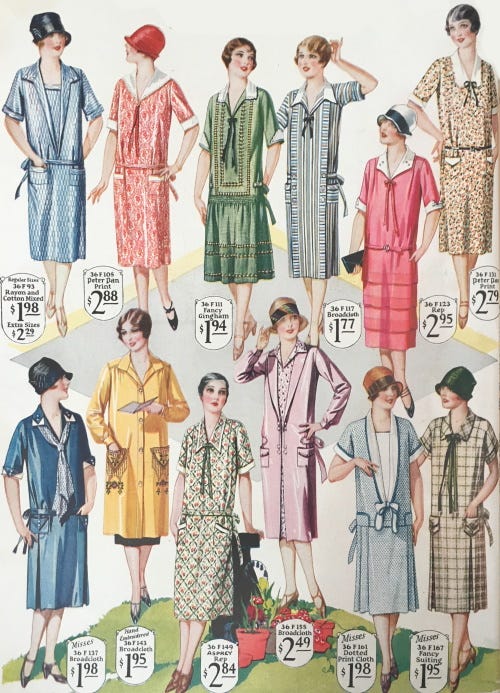
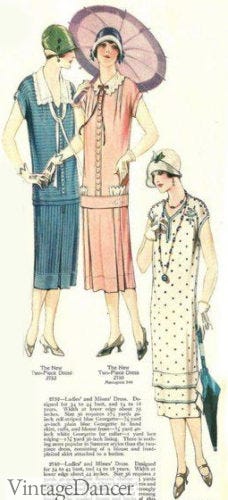
1920’s Shoes
Shoes were leather or “sturdy gabardine or canvas” with a moderate to mid-height heel; t-straps and oxfords in neutral colors.
“any type of dressy shoe (Mary Janes, strappy pumps) that featured a lot of cutouts and exposed skin was called a sandal. These summer-only shoes could be made of leather, suede, canvas, or brocade with a leather or rubber sole.”4
As demonstrated in the fashion plates above, pumps, usually with a single strap, were favored.
1930’s Fabrics and Colors
Colors favored gentle shades, especially in blues, greens, purples, and pinks, and prints became a firm favorite with the discovery of new techniques in the textile industry.
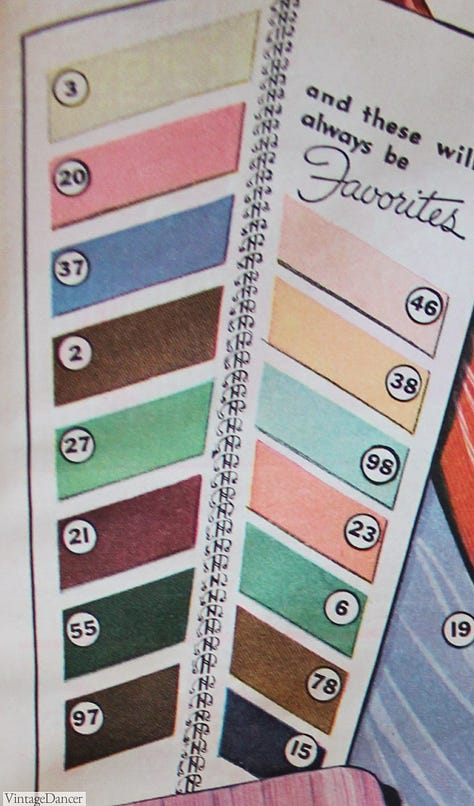

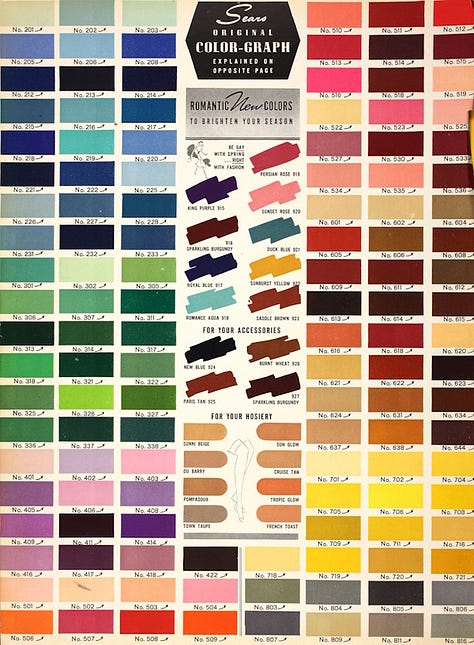
Feminine florals were first choice, but there were others, such as polka dots and similar prints. Despite the often drastically varying patterns popular in the 1930s, most of them shared a white background in common, further lending a gentleness to the print that made the fabric appropriate for summer.
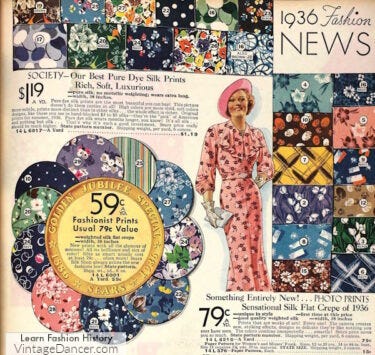
Crepe was the most popular fabric of the decade, joined by cottons, linen, and seersucker; but, you can find a more extensive list (an amazing one!), along with all of the 1930’s color range here: vintage dancer.
Day Dresses
“While one would not wear one’s house dress out to run errands, fine dresses were marketed as perfect for a day full of different activities. The same daytime 1930s dresses could be worn from street to afternoon”.5
With its conservative necklines and lengthened skirts, the 1930’s is in our opinion, one of the most modest and most elegant of the decades.
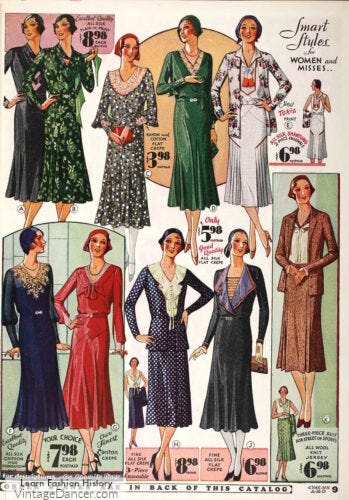
A more natural feminine silhouette returned, and along with it, a rain shower of the details missing from the 1920s. Dresses began to utilize frills and buttons more often, and frequently had some form of collar; these ranged in style from simple Peter Pan style collars to large ruffles to sculptured collars (TJ’s favorite! See examples here.).
Slim waists were emphasized by increasingly dramatic sleeves - the more volume, the better! You can find some pattern examples here, here, and here.
(TJ - I own this last pattern as a reproduction, and my go-to sleeve is the bishop sleeve!)
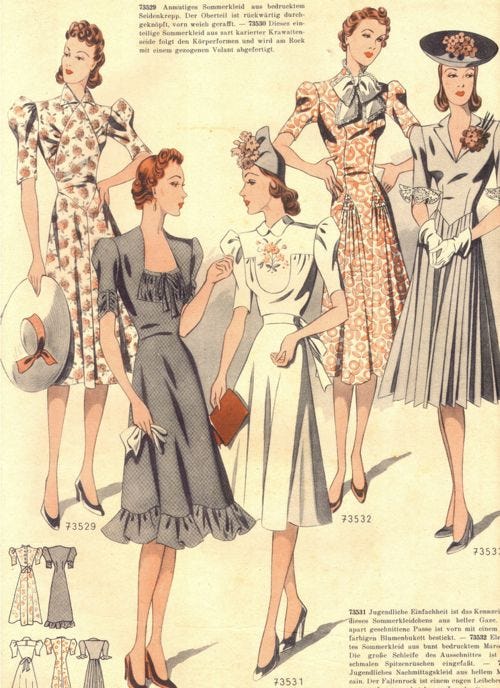
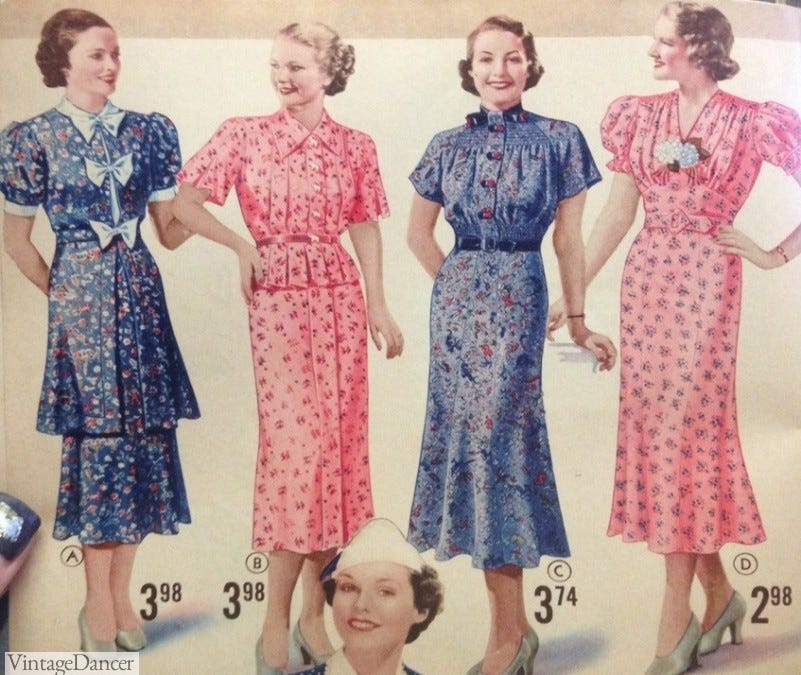
1930’s Shoes
There were many summer shoes to choose from, usually in white or fun combinations of bright colors; heeled sandals were a favorite, particularly the t-strap, but oxfords, monk-strap shoes, and pumps were also common. 6
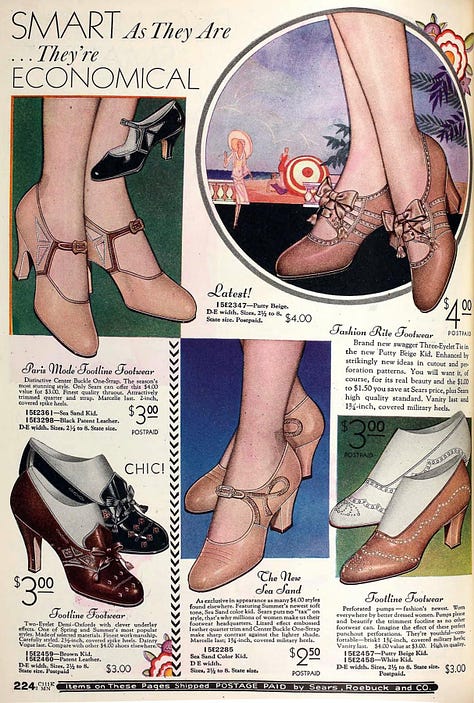
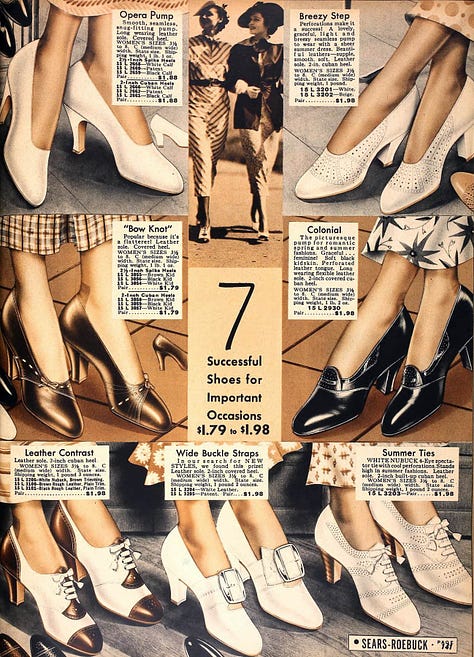

TJ - One of my favorite details in vintage shoes is that they always seemed to have a heel, until closer to the 60’s! Many may not say the same, but I would happily wear heels around the house all day. (I’m also the girl who has been known to run in 2.5 inch heels, so that’s possibly just me.)
https://www.wardrobeshop.com/blogs/vintage-style-fashion/1920s-fashion-fabrics-colors
https://vintagedancer.com/1920s/fabrics-and-colors/
https://vintagedancer.com/1920s/1920s-womens-fashion/
https://vintagedancer.com/1920s/history-of-1920s-fashion-shoes
https://vintagedancer.com/1930s/1930s-day-afternoon-dresses/
https://brilliantio.com/1930s-shoes/
https://vintagedancer.com/1930s/1930s-shoes-history/
https://clickamericana.com/topics/beauty-fashion/vintage-1930s-shoes-for-women
Thank you for reading! You can purchase the artwork from Windflower’s stories, such as Ransom, at the link below.
Windflower is fully supported by its audience. Instead of buying me a coffee, you can leave a donation which will go towards the purchase of fabric for interactive projects, where you’ll be able to vote on what historical dress or film costume I’ll recreate! Donations also help to continue creating Windflower’s content and to support the local Latin Mass.
Please consider subscribing and sharing with your friends. Thank you, and God bless!






Lovely post! I so enjoy seeing beautiful and modest clothing from the past, even if it does make me more aggressively bemoan the fate of modern fashion, haha!